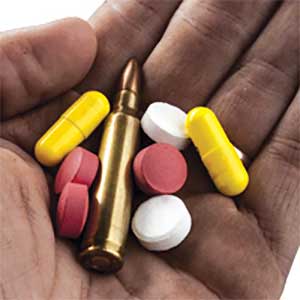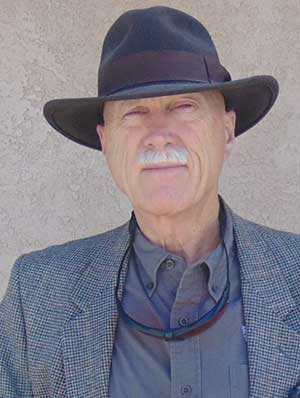
Arizona -(Ammoland.com)- Autopsy results, as reported in the Las Vegas Review Journal, show the Mandalay Bay Shooter committed suicide with a shot to the roof of the mouth. From reviewjournal.com:
The autopsy, which included toxicology tests and a brain examination, found that Paddock had anti-anxiety medication in his system. It also confirmed what authorities had previously said — that Paddock died of a self-inflicted gunshot wound to his head after he opened fire at an outdoor concert from his 32nd-floor Mandalay Bay suite, killing 58 people and injuring hundreds more.
“It seems that based on the autopsy reports there were no physical excuses for what Steve did,” said his younger brother Eric Paddock, who lives in Orlando, Fla. “We may never understand why Steve did this.”
The bullet that killed Paddock entered the roof of his mouth and traveled to the back of his head and then upward without exiting his body, leaving fractured bones along the way, the report says. Paddock also had scrapes on his right upper calf and knee and a bruise on his left calf.
A separate examination of his brain done at Stanford University found no major abnormalities, including no evidence of Alzheimer’s disease.
The article in the Review Journal does not say if the autopsy report shows what position the Mandalay Bay shooter was in when he committed suicide or which hand held the .38 Smith & Wesson 340SC that appears in the photograph of the dead shooter. The revolver is about three feet from the shooters head, as he lies on his back on the Mandalay Bay carpet. The article does not say what position the body was in when it was found.
There appears to be a trail of blood spots from the pool of blood under the shooter’s head to the revolver. Perhaps the revolver was moved from the position where it was found to the one in the photograph.
There seem to be two separate pools of blood, perhaps created at two separate times. This could have happened if the body started face down, with the hand closer to the revolver, and was then moved to a different position or positions, perhaps as first responders made their initial investigation.
We do not know precisely when the photograph was taken, or during what part of the investigation.
Editor’s Note: What we do know is that Paddock, like numerous mass shooters before him, was using anti-anxiety medication at the time of the shooting. Read more here to see the one thing every mass shooter shares in common.
The autopsy report shows that the bullet did not exit the skull. The blood must have come out of the nose and mouth. Most seems to have come out of the nose and mouth in at least two separate events.
It is not unusual for the bullet from a .38 revolver to fail to exit the skull. The autopsy report should tell us what the remaining ammunition was in the revolver.
The Review Journal goes on to say that there were no brain abnormalities, or evidence of Alzheimer’s disease in the shooter’s brain.
There are probably many more photographs in the autopsy report. They may be even more graphic than the one that was released to the public early in the investigation. The answers are likely there as to the original position of the body, and how and when it was moved.
Perhaps the entire autopsy report will be released to the public in the future.
©2018 by Dean Weingarten: Permission to share is granted when this notice is included.
About Dean Weingarten:
Dean Weingarten has been a peace officer, a military officer, was on the University of Wisconsin Pistol Team for four years, and was first certified to teach firearms safety in 1973. He taught the Arizona concealed carry course for fifteen years until the goal of constitutional carry was attained. He has degrees in meteorology and mining engineering, and recently retired from the Department of Defense after a 30 year career in Army Research, Development, Testing, and Evaluation.
